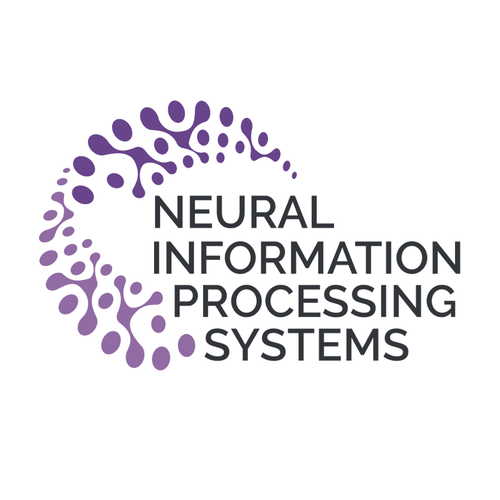Apr 30, 2025
The Leaderboard Illusion
Chatbot Arena has emerged as the go-to leaderboard for ranking the most capable AI systems. Yet, in this work we identify systematic issues that have resulted in a distorted playing field and propose recommendations to improve the rigour of the leaderboard.

“When a measure becomes a target, it ceases to be a good measure.”
— Charles A. E. Goodhart
The Chatbot Arena
Chatbot Arena pits the world's most advanced AI models against each other in a competition driven by human feedback. Leading models enter the arena where they're evaluated through direct comparisons.
Visitors submit their own prompts and questions, receiving responses from two randomly selected models. They then choose their preferred answer in blind evaluations, not knowing which model generated which response. This approach has made Chatbot Arena known for testing AI in authentic, real-world scenarios.
Should we trust the rankings?
Chatbot Arena, a popular community-driven platform, has become the main battleground for ranking AI models. But as its influence grows, so do concerns about how fairly progress is being measured. We analyzed 2 million battles and 243 models across 42 providers from Jan 2024 to April 2025.
We found that private testing and oversampling give some models an unfair edge, leading to overindexing on Arena-specific metrics rather than real progress. We propose concrete recommendations to make Arena’s evaluation fairer, more transparent, and more reflective of true AI advancements.

Our findings reveal systematic issues in the leaderboard
Private testing and retraction
Chatbot Arena has an unstated policy of allowing select providers to test many submissions in parallel. We show that certain model developers have benefited from extensive private testing. In a single month, we observe as many as 27 models from Meta being tested privately on Chatbot Arena. Notably, we find that Chatbot Arena does not require all submitted models to be made public, and there is no guarantee that the version appearing on the public leaderboard matches the publicly available API. We show that this skews Arena scores upwards and allows providers that engage with extensive testing to gamify the leaderboard.

Systemic data asymmetry favors proprietary models
Proprietary model providers dominate the battles and, as a result, get access to 62.8% of the Chatbot Arena’s data. In comparison, the top 4 academic/nonprofit labs collectively hold less than 1%, a 68:1 disparity. This imbalance stems from hidden testing and uneven model exposure in battles. Chatbot Arena data access drives significant performance gains. The differences in data access between providers matter; we estimate that by training on Chatbot Arena data, model ranking can be improved significantly. In a controlled experimental setting, we observe that increasing the arena training data proportion from (0% → 70%) more than doubles the win-rates from 23.5% to 49.9% on ArenaHard.

Disparities in sampling rates enable data asymmetries
Our work finds large biases towards proprietary models in sampling rates. For example, we observe a maximum daily sampling rate of models from a handful of proprietary model of up to 34%, which is 10 times more than what is observed as the maximum sampling from academic providers.

Open models are removed more than proprietary models
Per leaderboard data, open-source models are removed more often than proprietary ones. The protocol for why certain models are deprecated often lack clear criteria, and when models are removed haphazardly, their frozen ratings can distort historical rankings. This structural bias leaves community-driven AI at a systematic disadvantage.

Training on arena data could lead to inflated rankings
We show that models trained on higher proportions of Chatbot Arena data achieve 20-30% higher win rates against competitors. The models are judged on new battles that closely mimic the training data, creating a cycle where familiarity with past data inflates scores on the leaderboard in the next cycle.

Recommendations
1. Prohibit post-submission retraction
Leaderboard fairness hinges on showing every model’s performance—not just the best attempts.
Granting some providers more chances to private test their models before going public with the best one may lead to inflated rankings.
This lack of transparency makes it hard to distinguish between real progress and strategic optimization. To ensure fairness, we propose that all submissions be final and that providers disclose all their attempts, so the focus remains on fair comparisons and meaningful advancement and not statistical shortcuts.
2. Limit number of variants
Private testing is useful for allowing the community to evaluate models in development while keeping them anonymous before release. However, some providers are testing far more models than others, which may unfairly benefit certain companies and skew the results.
To ensure fairness, we recommend setting a strict and publicly disclosed limit on the number of private models each provider can test at once (e.g., a maximum of 3 models per provider). This prevents excessive testing that could distort the leaderboard and ensures transparent, fair benchmarking for everyone.
3. Ensure models are removed equally
Instead of vague rules, remove models based on clear, performance-driven criteria and fairness. We recommend keeping the leaderboard balanced and fair by removing the weakest 30% of models within each category (proprietary, open-source, open-weight). This ensures no single group (like big tech companies) dominates the rankings and keeps model rankings reliable and meaningful.
Think of it like pruning a garden: trim the least healthy plants in each section to let everything else thrive—without accidentally favoring one type over another. Clear rules = fairer competition.
4. Implement fair sampling
We propose that Arena use the "active sampling" strategy, which prioritizes under-evaluated or high-uncertainty model pairs to reduce statistical bias. Instead of giving every model an arbitrary and disproportionate share, this method focuses on reducing uncertainty in rankings. Imagine trying to rank athletes fairly: you’d prioritize matchups where the outcome is unclear (e.g., a rookie vs. a veteran) to learn faster who’s truly better.
These steps would transform rankings from a resource contest into a true measure of innovation, ensuring all models compete on skill, not just budget or luck.
5. Make model removals transparent
Instead of removing models without notifying the providers, we recommend maintaining a comprehensive list of all models removed from the leaderboard. This will help establish transparency and help ensure that the model removal policy is implemented fairly.
Looking to the future
AI benchmarking platforms should serve as neutral arbiters of progress, empowering the entire community to measure and improve AI responsibly. Yet current practices—like opaque testing rules and unchecked corporate advantages—risk turning this leaderboard into gatekeepers of inequality rather than engines of innovation.
Adopting our recommendations would align the leaderboard with its research-backed ideals, ensuring rankings reflect genuine progress rather than resource advantages. This transformation is critical to ensure the system upholds its mission of equitable progress for the entire AI community, not just a select few.
Authors
Shivalika Singh, Yiyang Nan, Alex Wang, Daniel D’Souza, Sayash Kapoor, Ahmet Üstün, Sanmi Koyejo, Yuntian Deng, Shayne Longpre, Noah A. Smith, Beyza Ermis, Marzieh Fadaee, Sara Hooker
Additional contributors
Madeline Smith, Thomas Euyang, Brittawnya Prince, Jenna Cook, Kyle Lastovica, Julia Kligman, Nick Frosst
Collaborators
This work represents a cross-institutional collaboration with researchers from the following institutions:




































Related works



